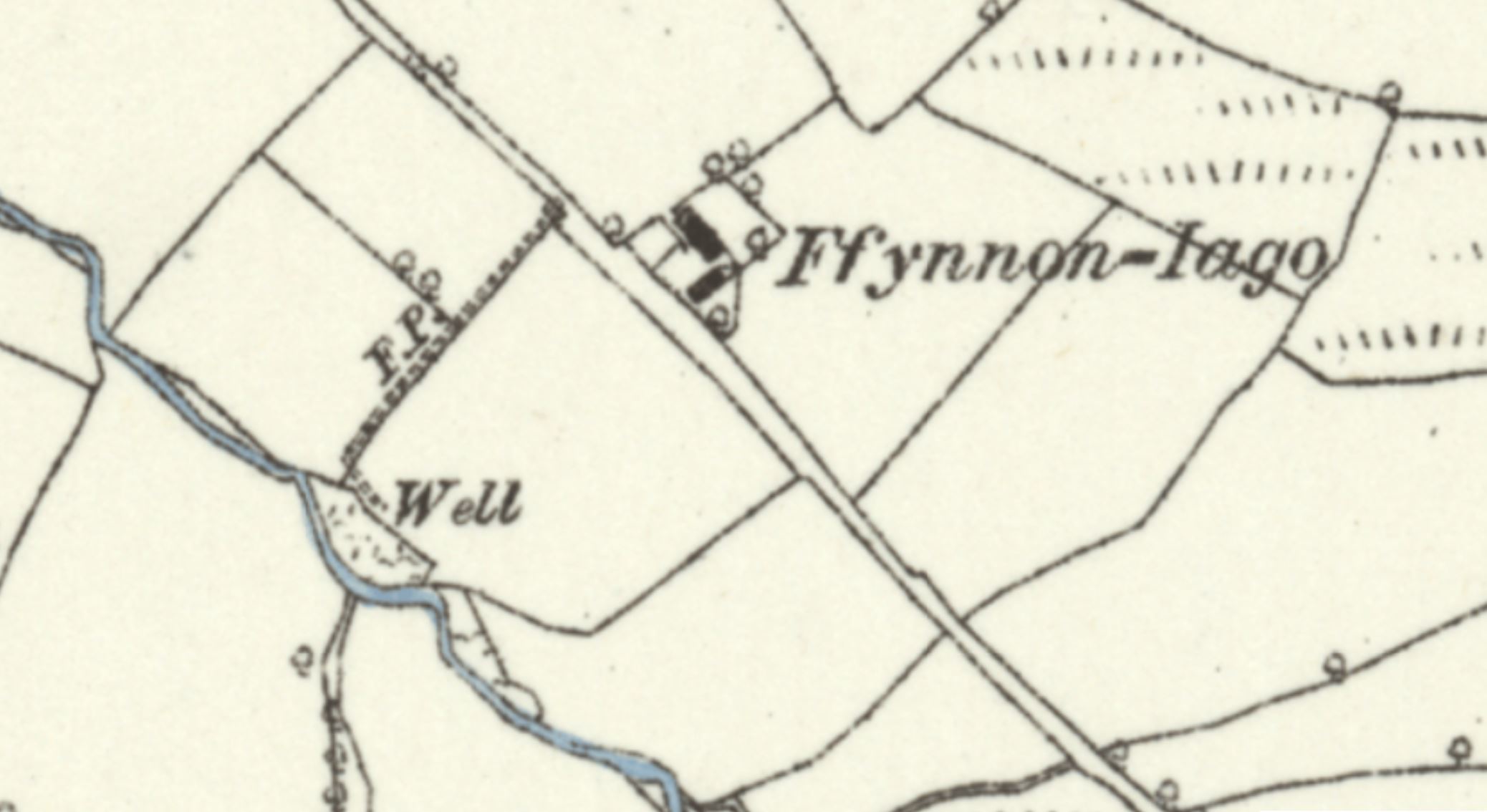 |
Dedication: Saint James Location: Llanybydder Coordinates: 52.06133N, -4.11954W Grid reference: SN547424 Heritage designation: none |
HOME - WALES - CARMARTHENSHIRE
 |
Dedication: Saint James Location: Llanybydder Coordinates: 52.06133N, -4.11954W Grid reference: SN547424 Heritage designation: none |
It is thought that there was once a medieval chapel, Capel Iago, located just a few metres south-west of Ffynnon Iago. This chapel seems to have given its name to the nearby farm, Capel Iago. In fact, the field immediately north of this farm is reportedly (although this is not recorded on the 1840s tithe map schedule of the area) called "Capel Iago", and the field immediately west of the farm is, most interestingly, called "Yr Hen Fynwent", meaning "the Old Graveyard"; it is in this latter field that several cist graves have been found. When the site was visited in 1917 by the Royal Commission, they reported the existence of a 30-inch-high standing stone located near the site of the chapel, and noted that the ground, when ploughed, had "yielded several large boulders which were thought to be the foundations of a small building". Although there is no documentary evidence to support the claim that there was once a medieval chapel here, there unquestionably was.
It is clear where Ffynnon Iago took its dedication from; "Iago" is the Welsh form of the name James. Undoubtedly, the water from Ffynnon Iago was used in this chapel for baptismal purposes, thus giving it its name. The well also seems to have supplied the nearby farm, Ffynnon Iago, with water. Unfortunately, I have been unable to glean any information about any traditions that may have been associated with Ffynnon Iago.
The site was always marked on historic Ordnance Survey maps, although it has never been named. By 1906, the well appears to have been covered or incorporated into some kind of structure (perhaps a small well-house), but this structure does not seem to have been extant by the time that the Royal Commission visited it eleven years later. When the Royal Commission did visit the well on the 18th of September, 1917, they simply described it as "a copious spring which is known as 'Ffynnon Iago'".
Today, the well is no longer marked on Ordnance Survey maps; nonetheless, it reportedly still survives as a sort of swamp.
|
Access: The well is located on private land that is probably owned by Ffynnon Iago Farm. |
Images:
Old OS maps are reproduced with the permission of the National Library of Scotland
Copyright 2025 britishholywells.co.uk